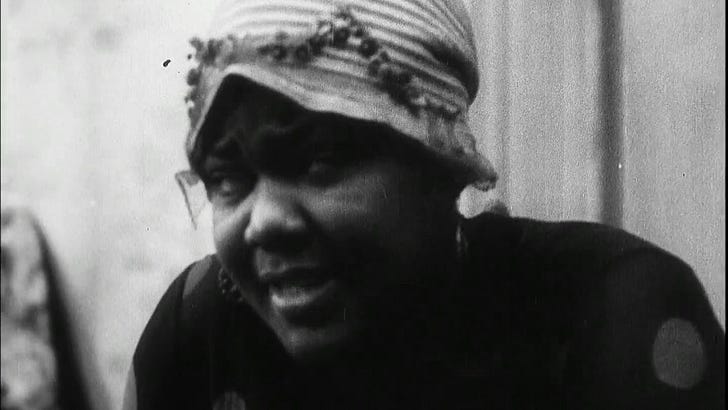The short film “St. Louis Blues” from 1929 features the legendary Blues singer Bessie Smith in her only cinematic appearance. Directed by Dudley Murphy, the film showcases the spirit and culture of Jazz and Blues in the 1920s, as well as the talent and influence of Smith.
The film tells the story of Bessie, played by Smith herself, who suffers from love and betrayal in the midst of the lively Jazz scene. The film is based on the song “St. Louis Blues” by W.C. Handy, which reflects Bessie’s emotions and experiences. The film follows Bessie’s journey, from the moment her lover Jimmy steals her money and leaves her, to the moment she sings her heart out in a nightclub, where she finds comfort and strength in music.
Smith’s performance as Bessie is captivating, as she expresses the feelings and resilience of a woman who faces challenges. Her voice is powerful and her presence is magnetic, drawing the attention of the viewers in every scene.
One of the most memorable scenes in the film is when Jimmy, played by an unknown actor, takes Bessie’s money and runs away, representing the oppression and discrimination that Black artists faced in the entertainment industry. The scene also includes a subtle reference to George Gershwin’s “Rhapsody in Blue”, which comments on the white appropriation of Jazz music, highlighting the social and cultural relevance of the film.
“St. Louis Blues” is a film that transports the viewers to a different era, but also reveals the lasting legacy of Bessie Smith and her contributions to the Blues scene. Her character is a role model for audiences, as she shows the struggles and achievements of Black artists in a society divided by race.
I recommend you to watch the film in full, to appreciate the magic of “St. Louis Blues” and the genius of Bessie Smith. Let yourself be moved by the music and the emotion, and enjoy the timeless story of love, loss, and the power of the Blues.
Keep listening, keep dreaming, keep swinging!




